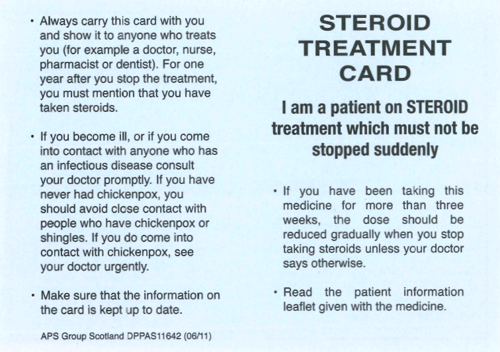Tables are best viewed in landscape mode on mobile devices
| Route | Formulation | Dexamethasone Base Content |
| Oral | Tablets | 500 micrograms, 2mg and 4mg |
| Soluble tablets (as dexamethasone sodium phosphate) | 2mg, 4mg and 8mg | |
| Oral solution (as dexamethasone sodium phosphate) | 2mg/5ml, 10mg/5ml, 20mg/5ml | |
| Injection | (as dexamethasone sodium phosphate) | 3.3mg/1mla, 6.6mg/2mla |
|
Check local guidance - not all formulations/strengths may be stocked. Some formulations may be non-formulary in some NHS boards. Some brands may not be licensed for sub-cut use – refer to Syringe pump guideline. a. Some brands may contain latex – check product literature. |
||
- Dexamethasone tablets are formulated as dexamethasone base; the oral solution, soluble tablets and injectable formulations are formulated as dexamethasone sodium phosphate. The British National Formulary (BNF), Summaries of Product Characteristics (SPCs) and product labels now all use dexamethasone base for labelling and dosing advice.
- Follow local guidance when converting doses between oral and subcutaneous (SC) or intravenous (IV) dexamethasone (see below: Dose conversions).


